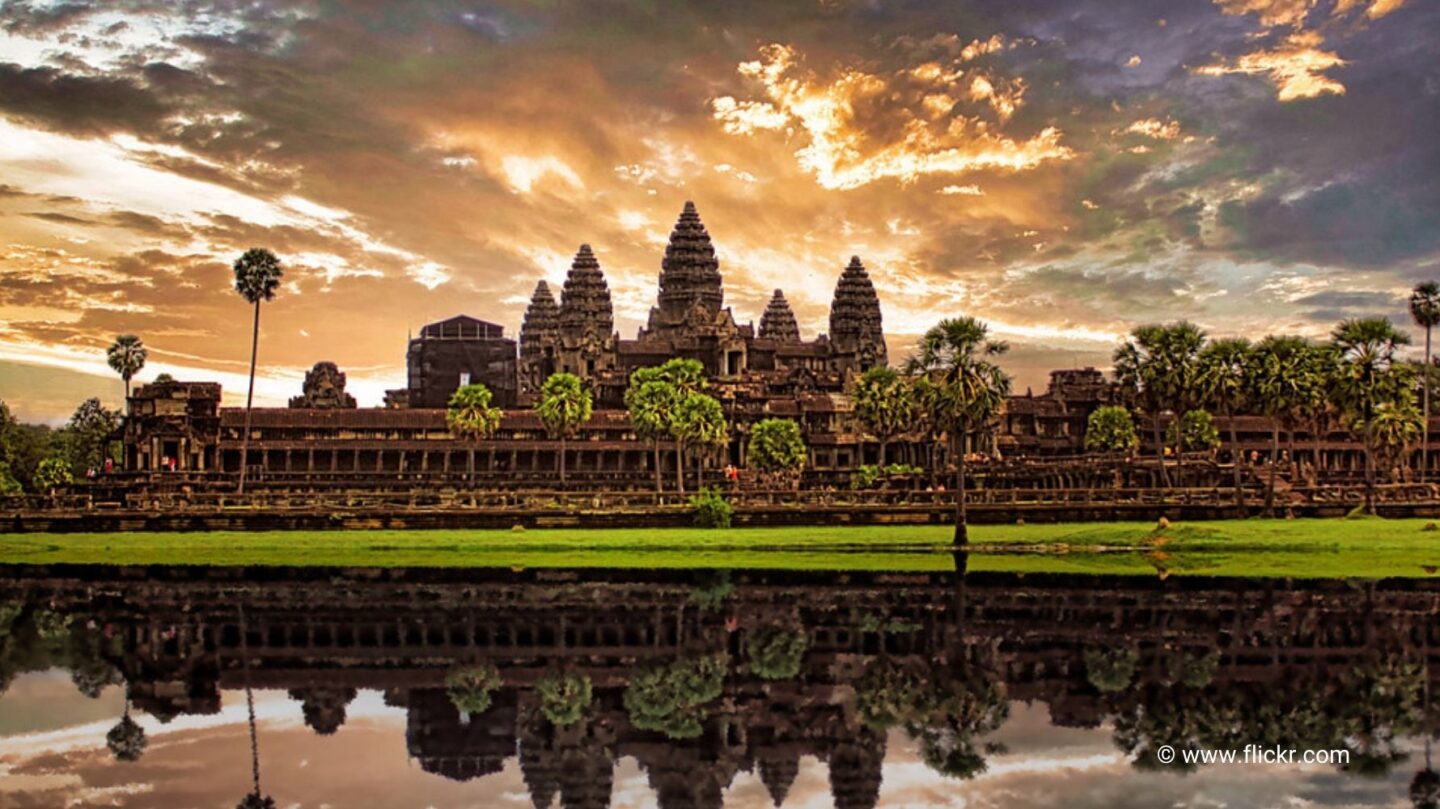A Monument to the Khmer Empire
Angkor Wat, one of the largest and most magnificent religious monuments in the world, stands as a testament to the ingenuity and ambition of the Khmer Empire. Built in the early 12th century by King Suryavarman II, it was originally conceived as a Hindu temple dedicated to Vishnu. Over time, it transitioned into a Buddhist site, reflecting the region’s evolving religious landscape.
Located near modern-day Siem Reap in Cambodia, Angkor Wat was not just a temple but part of a vast city that once served as the political and spiritual heart of the Khmer Empire. The monument’s grandeur and intricate design have earned it a place as a UNESCO World Heritage Site and an enduring symbol of Cambodian culture.
Engineering Marvels of Angkor Wat
The construction of Angkor Wat is a feat of architectural brilliance. Covering over 162 hectares, the complex is surrounded by a massive moat and features a central temple with five towering spires, symbolizing Mount Meru, the home of the gods in Hindu mythology.
The temple’s walls are adorned with thousands of bas-reliefs, depicting scenes from Hindu epics such as the Ramayana and Mahabharata. The precision and detail of these carvings showcase the advanced craftsmanship of the Khmer people.
One of the most remarkable aspects of Angkor Wat is its alignment with celestial events. The main temple aligns perfectly with the sunrise during the spring and autumn equinoxes, reflecting the Khmer Empire’s sophisticated understanding of astronomy and its integration into religious practices.
The Decline and Rediscovery of Angkor
By the 15th century, the Khmer Empire had begun to decline, and Angkor Wat was gradually abandoned. Scholars debate the reasons for this decline, citing factors such as environmental degradation, shifts in trade routes, and military invasions.
For centuries, the grandeur of Angkor Wat remained hidden in the Cambodian jungle, known only to local monks and villagers. It wasn’t until the 19th century that the site captured global attention. French explorer Henri Mouhot rediscovered Angkor Wat in 1860, describing it as a forgotten masterpiece rivaling the grandeur of ancient Rome and Greece.
Modern Archaeological Discoveries
In recent decades, advancements in technology have deepened our understanding of Angkor Wat and its surrounding city. Using LiDAR (Light Detection and Ranging) technology, researchers have uncovered an extensive urban network hidden beneath the jungle canopy. This includes roads, canals, reservoirs, and residential areas, revealing that Angkor was a thriving metropolis home to hundreds of thousands of people.
These discoveries have reshaped our understanding of the Khmer Empire, highlighting its sophisticated water management system, which was crucial for agriculture and urban development. The ability to harness and distribute water effectively allowed the empire to flourish for centuries.
The Mystique of Angkor Wat Today
Angkor Wat remains shrouded in mystery, with many questions still unanswered. How did the Khmer engineers transport and assemble the massive sandstone blocks used in its construction? What led to the city’s eventual decline? These mysteries continue to captivate historians, archaeologists, and travelers alike.
Today, Angkor Wat is not only a symbol of Cambodia but also a source of inspiration for people worldwide. It attracts millions of visitors each year, drawn by its architectural splendor and the mysteries of the civilization that created it.
A Legacy of Wonder and Resilience
Angkor Wat is more than a monument; it is a living legacy of the Khmer Empire’s achievements and a reminder of humanity’s capacity for creativity and innovation. As research continues to unveil its secrets, Angkor Wat stands as a bridge between the past and present, inviting us to explore the wonders of a lost city rediscovered.
